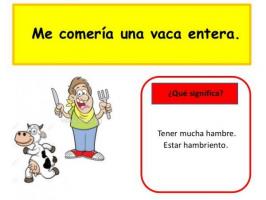What is VERBAL and NON-VERBAL language

Image: language and literature that escolapias soria. - Blogger
¿What is verbal and non-verbal language? Although the differences are multiple, there are still those who confuse them, since it is not strange that they appear united in the act of communication between two or more people on different occasions.
Obviously, we understand by verbal language that it includes the use of words, whatever language is used. However, the non-verbal is just the opposite, that is, the one that does not imply the use of a word some of any language.
However, the differences are somewhat more complex. For this reason, we are going to know next in the lesson of a TEACHER that begins what is verbal and non-verbal language, and then we will see some examples that clarify both phenomena.
Index
- Verbal language: simple definition
- What is non-verbal language
- Verbal and non-verbal language used at the same time
- Examples of verbal and non-verbal language
- Difference between verbal and non-verbal language
Verbal language: simple definition.
We begin by knowing what verbal language is. As we have already commented, verbal language is the type of language that use words to interact with one or more people in a specific context on which the communicative act itself will depend.
Verbal language is carried out in two basic ways, one is through oral format, that is, speaking, giving a conference, chatting on the phone... And another is the written format, which will be through reading a book, a conversation through messaging applications snapshot, etc., that is, graphically representing the signs of a language so that the receiver understands the message.
Oral language have various levels. That is, either speaking a high and cultured form language, fully formal and well articulated so that it is easily understandable, but also through vulgarisms and errors that, although they are less understandable, also fulfill their function as long as the issuer manages to make himself understood.
Undoubtedly, correctly expressed articulated language is the highest mode of verbal communication. Whether through technological resources, such as a mobile phone or a computer, or in a chat with friends, using any language well is the greatest exponent.
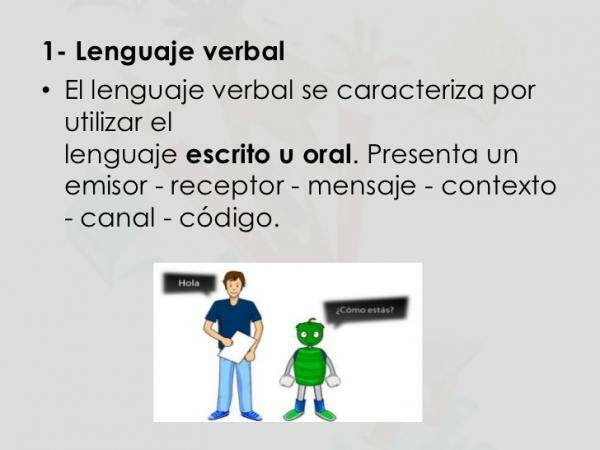
What is non-verbal language.
For its part, non-verbal language is communication through signs other than the language, but they can be received through various senses, such as lsight, smell or touch and in turn understood or not. We are talking about sensory images such as auditory, olfactory, visual, etc. This includes gestures, movements, sounds that are not very intelligible but may be understandable, etc.
We find in non-verbal language various forms, for example, light ones, such as the turn signal of a car, the images, something that could be any painting, the sounds such as a hiss or a growl, the gestures, such as lifting the big toe as a sign of victory, the colors, because red can be associated with passion, the flags in the world maritime…
We can see that even within non-verbal language, advanced and common communication techniques have been developed. For example, if you fly a flag of Spain, everyone who knows it will automatically understand what your nationality is.
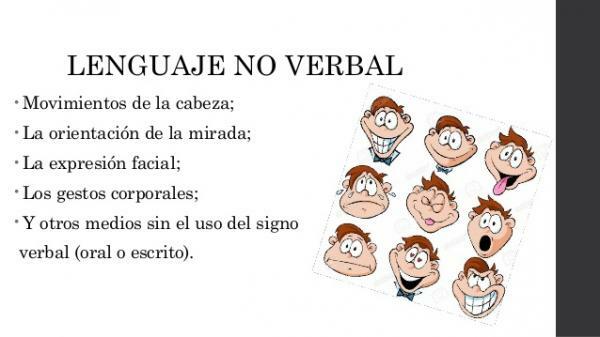
Verbal and non-verbal language used at the same time.
Verbal and non-verbal language can go hand in hand on multiple occasions. In fact, good dexterity in both is perfectly complementary. We can observe common cases, such as a person who talks to you and at the same time touches you or gestures a lot with his hands, someone who explains the meaning of a traffic sign, etc.
Today a form of communication has been born that unifies verbal and non-verbal language through new technologies. We find it easily when we look at social networks or messaging applications and chats and use a mixture of writing with symbols, such as hearts or famous people smileys to communicate emotions, feelings or simply give visual responses that better explain our state of mind.
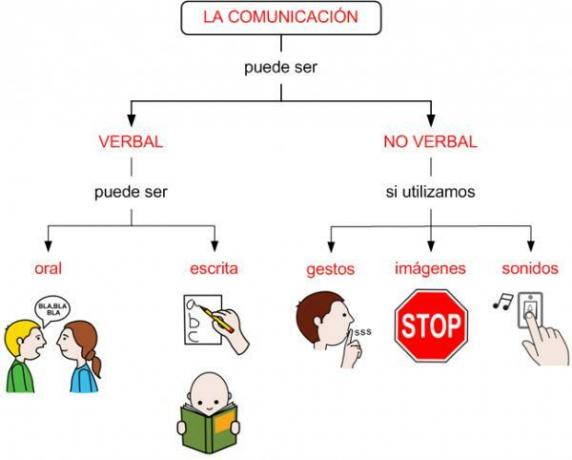
Image: language and literature that escolapias soria. - Blogger
Examples of verbal and non-verbal language.
The examples that we can find in both types of language are multiple.
Examples of verbal language
- Conversation between Juan and Julia: Are you coming with me? No, I'll wait for you at the door.
- Chat between María and Paco: Are you in your room? No, I'm getting off work.
Examples of non-verbal language
- Pouting at punishment or anger from your parents.
- Being seated correctly in class as a sign of interest and correction.
- Look at the food with the desire to start tasting it.
- Put the turn signal on a moped.
Examples of verbal and non-verbal language
- Conversation between Luisa and Antonio: Look what is happening there - said Luisa pointing with her finger.
Difference between verbal and non-verbal language.
Now that we know the definition of verbal and non-verbal language and examples, we will end by making a brief summary of the difference essential in these two linguistic structures.
The main difference is the next:
- Verbal communication uses words for communication to exist.
- Non-verbal communication is used in gestures or behaviors visuals.
Therefore, the use or not of words is the feature that makes the difference between the two communicative systems. If we speak through words, we are using verbal language and if, on the other hand, we speak through looks, smiles or gestures, it is when we are carrying out non-verbal communication.
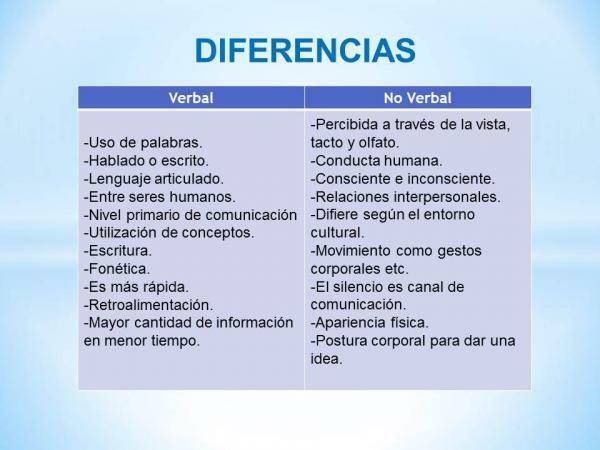
If you want to read more articles similar to What is verbal and non-verbal language - With examples, we recommend that you enter our category of Grammar and Linguistics.
Bibliography
- Grajales, H. P. (2001). Verbal and non-verbal languages. COOP. EDITORIAL MAGISTERIUM.
- Sánchez, L. V., & Mena, J. Á. V. (1990). The language. Study Guide Communication Workshop I Program 2003, 55.
- Baró, T. (2012). The great guide to non-verbal language. How to apply it in our relationships to achieve success and happiness.

